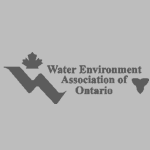Frequently Asked Questions
Below are some of the frequently asked questions and answers in regards to our valve and hydrant products. If you need more product information, or would like to speak to a specialist, please submit a request or see our submittal sheets.
-
What does MJ mean?
MJ stands for Mechanical Joint and is a compression type of fitting. A mechanical joint is a time-saving, easily installed joint that insures long-term, trouble-free performance. Uncomplicated, this joint comprises a gland, gasket and bolts. It requires no mechanical skill to install, is unusually easy and fast to assemble.
When the bolts are tightened, two metal pieces are drawn together, which squeezes a rubber gasket that is between them. This compresses the gasket forcing it to press tightly against the pipe and make a seal. An MJ seal is rated for 350 psi for 2" to 24" fittings, and to 250 psi for 30" to 36" fittings.
-
Why use a monitor hydrant?
A monitor hydrant is used in such places as oil fields, petrochemical plants or other locations that have dangerous or flammable compounds. The monitor hydrant has a special arm which takes an attachment that directs a spray of water without the need for a person to continually be present. It can be turned on and left so that people can leave the area of immediate danger, while the hydrant continues to hose the fire, chemical spill, or other dangerous situation.
-
What are PN10 and PN16?
PN10 and PN16 specify metric flange measurements (such as bolt circle diameter, hole size, bolt size etc) according to such standards as ISO 7005-1 or DIN 2501. Our standard flanges are defined in the English system (inches) and most will not mate up with metric flanges. With Kennedy Valve's state of the art CNC machining capabilities our products can have flanges made to PN10 or PN16 specifications so that a connection can be made between our products and metric products (for example, one of our valves with a PN10 flange end can be attached to some metric pipe that also has a PN10 flanged end).
-
What is the difference between NRS and OS&Y gate valves?
NRS means Non-Rising Stem. OS&Y means Outside Stem and Yoke. In an NRS valve, the stem will turn to open and close the gate, but the stem does not move up or down as it turns. With a OS&Y valve, as the stem turns, it moves into or out of the valve, which also moves the gate to open or seal the valve.
-
What is the difference between Cast Iron and Ductile Iron?
Ductile Iron is a newer stronger material, created by the addition of magnesium alloy to the molten iron. If a material can withstand extensive deformation without failing under high tensile stress, it is considered ductile.The result is an iron that is much stronger and harder to break, more corrosion resistant, and is easily machined.
-
What is a Storz connection?
Storz is a quick connect type of fitting. It lets a fireman attach a hose that has a Storz end to a hydrant with a simple push and twist instead of screwing it onto a threaded end. Storz connections are options on many of our hydrants.
-
What is an indicator post?
An indicator post is used in a situation (such as fire protection) where it is important to see quickly if the valve is open or closed. The indicator post has a small window which states either open or closed. The indicator post can be vertical where the valve is below the floor level, or it can be horizontal — a wall post — where the valve is on the other side of a wall. An indicator post can optionally come with a hand wheel for opening or closing the valve.




